Over the past few years, the immediate tactile excitement generated by Virtual Reality (VR) gaming and clever Augmented Reality (AR) marketing campaigns has become an increasingly mainstream novelty. VR and AR exist on the Mixed Reality (MR) spectrum, referring to any combination of virtuality and reality, and while MR is still generally associated by the layman simply with gaming and gimmickry, this could not be further from the full picture. MR is an extremely powerful tool for driving outcomes with a limitless diversity of applications across every industry. It is the key for the future success of so many industries and is primed to create an unpredictably enormous disruption, changing the landscape of our entire society within the next 5-10 years. To give you an idea of why this is the case, we’ve put together a list of our ten favourite innovative uses of MR that already exist today.

1. Safety Training
MR safety training is an exciting innovation set to drastically improve workplace safety across limitless industries, saving countless lives and dollars. MR training means using VR headsets to place employees within a real, interactive, 360-degree video workplace where they encounter real-life safety hazards and situations. This means inhabiting scenarios that are unfeasible or unsafe to practice in the real world, while learning to make important decisions in real time and under pressure. MR simulations provide the ability to experience the consequences of safety complacency in a visceral manner, dramatically raising retention rates. This means moving towards zero medically treated incidents and lost time incidents. According to research, using MR for safety training may improve safety outcomes by a factor of an estimated 30%.

2. Live music
MR offers an incredible gift to any lover of live music, and one that promises to revolutionise the way music and performance is consumed. By placing a range of 360-degree cameras in choice locations around a venue, and live-streaming the spherical footage, music lovers can experience the thrill of seeing their favourite artists perform live, from the comfort of their own home, with the full buzz of the concert-going experience. Augmenting the 360 footage with interactive hotspots means giving the viewer total control to watch the concert from every angle and navigate between different cameras. Audience members at the venue then have the ability to get out their mobile device and enjoy the concert as if they were on stage with the artist – making bad seats a worry of the past.

3. Training Medical Students
MR training is also being used as a tool within the medical industry. In many cases, acquiring real world experience on-the-job simply isn’t feasible for healthcare professionals, as their decisions carry a grave deal of weight and can even imply the difference between life and death. With MR, medical professionals are able to explore every procedure and learn how to care for patients without any risk involved. They can participate in realistic tutorials that allow them to interact with medical equipment, and face the pressure of making choices under duress. These simulations are able to teach and train in a way that is not possible with other types of lessons, by realistically imparting experience and consequence rather than just facts. This translates into lower liability insurance costs and fewer cases of malpractice and negligence.

4. Travel
MR promises to change the way we perceive the world, and this means changing the way we travel the world. Learning about history can now mean experiencing history, and travelling through space can now mean travelling through time. Using AR, you can now be accompanied by a virtual tour guide with you as you travel, interacting with your surroundings and explaining the history behind them. Furthermore, this technology means this history itself can be fully brought to life. Imagine the immersive thrill of visiting the Roman Coliseum and using AR to experience gladiator battles right in the world before you.

5. Simulation
MR has begun to be used across many industries a powerful tool for simulation, prediction, and visualisation and one of the most powerful applications of this approach is in agriculture. Using artificial intelligence, machine learning and advanced algorithms, MR simulations can demonstrate crop growth based on weather patterns, practices, and other variables. Researchers can collect data, test and import it into the simulations in order to observe the crop growth and suggest changes in practices. This will help farmers prepare their crops against any unwelcome environmental changes while at the same time realistically understanding the consequences of not following right practices, raising total shareholder return and net cash generated from operating activities.

6. Therapy
VR has been used to varying degrees in therapy for over a decade, but the limitations of the technology has made this application sparse. However MR is being increasingly implemented as an effective tool in psychological and occupational therapy. Patients occupy a virtual or mixed environment and digitally navigate through specifically designed environments, completing tasks in order to treat specific mental ailments. One successful example of this innovation is in exposure therapy, whereby patients overcome phobias by interacting with virtual simulations of trauma in order to allow them to overcome their fear response. This has also proven to be particularly successful in treating post-traumatic stress disorder.

7. Anaesthetic
Continuing in this psychological vein, MR is also proving capable of disrupting the pharmaceutical industry. The use of a VR headset playing a calming simulation, as a tool of distraction during surgery in place of anaesthetics, has proven surprisingly successful. Doctors have used soothing digital simulations to lull patients into a calm and distracted state rather than chemically inducing numbness or serenity; displaying striking and immersive vistas which completely block out the reality of the operating room. These simulations have proven to lower blood pressure and heart rate, reduce stress, and even fully remove the necessity of a general anaesthetic.

8. Retail
Online shopping represented a massive disruption in the retail industry, drastically changing the way we consume in the 21st century. Yet online shopping in itself does not fully compete with the tangible and tactile relationship that many consumers hold with the products they purchase. Many customers still feel the need to experience a product in a real space, and admit to appreciating the ritual of exploring a physical shop. With MR, real spaces can be digitally recreated and consumers can find themselves in floating online shopping spaces, visiting and navigating a physical shop in a virtual world, without leaving their house. AR also means demonstrating what purchases would look like on your person or in the context of your own home. Investment group Goldman Sachs has predicted the MR retail industry will be worth USD$1.6 billion by 2025.

9. Real Estate
Using 360-degree video and virtual simulations, immersive virtual tours can be taken of properties without having to physically visit them. Furthermore, simulation means that these properties can still be in construction, while a rendering of how they will appear when finished can be fully explored using a headset. Furthermore, potential buyers can now use MR to experience how a property will look once they have painted and furnished it their own way, letting a buyer be sure that this is the right space for them.

10. Architecture
Also in the realm of real estate visualisation, MR presents a clear and potent advantage to designers and architects because it empowers them to immerse into three dimensional spaces which simulate and render architectural designs. This means replacing traditional renderings and completely reducing the time spent reworking designs, efficiently eliminating costs and improving safety. The true power of this technology is the ability to convey the reality of designs and explore them. From experiencing the reality of a room’s lighting, to the strength of a building’s foundations, to the physical feel of a space; we can now realistically test how quickly a building can be evacuated, or how it might look once it is populated with furnishings. All this while it is still in the design phase, saving an incredible amount of money and time.
While these 10 innovative applications are some of our favourites, they only scratch the surface of what is possible with MR. Hopefully this list has opened your mind to the limitless realm of endless cross-industry application. This technology is going to dominate and dictate our future, with real and effective outcome-driving solutions. If you’re interested in learning more, or are wondering how MR might be relevant to you and your industry, contact us at 360dgrees.com. Our experts are waiting to empower you to commercialise using these radical innovations.
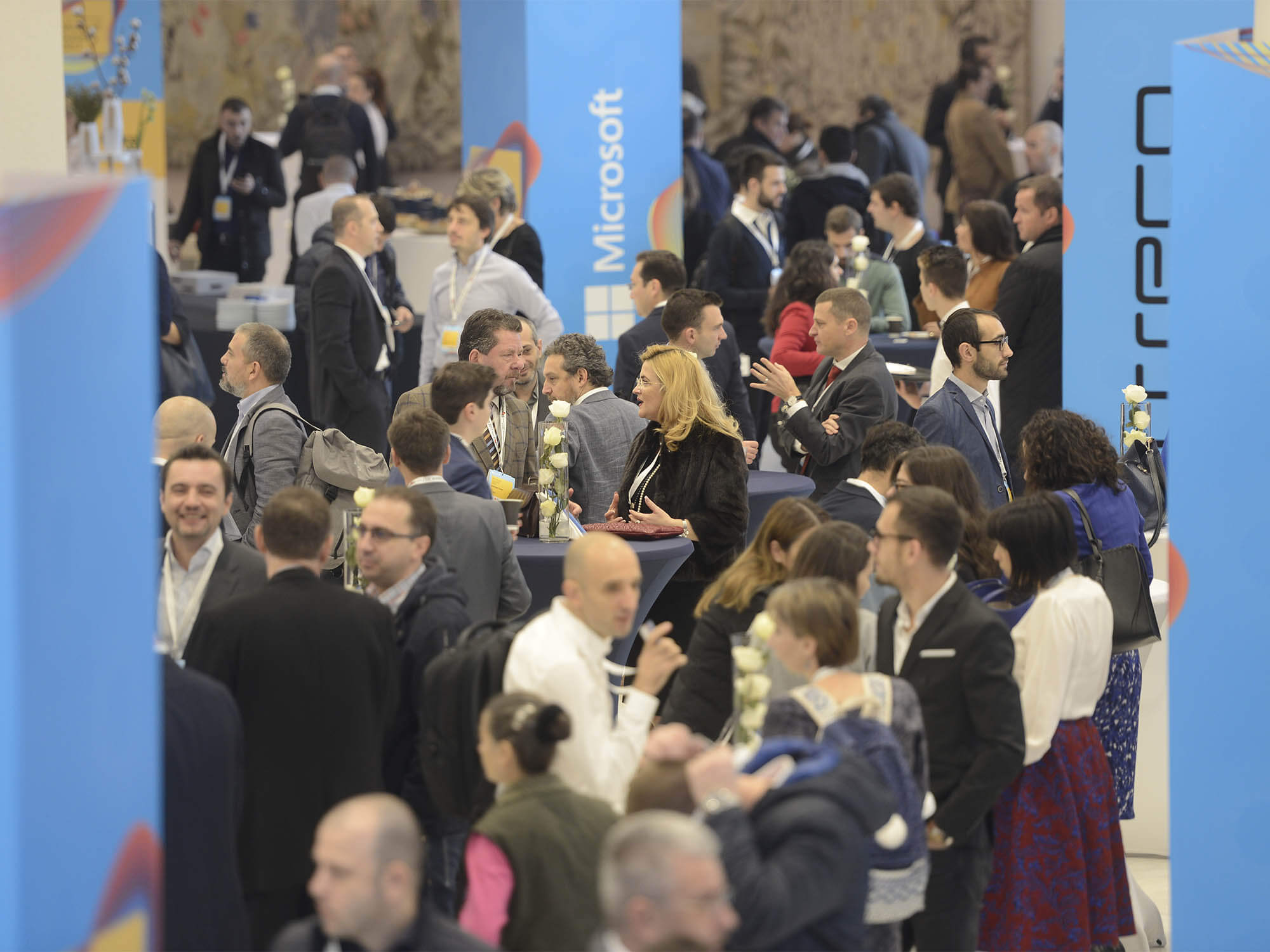

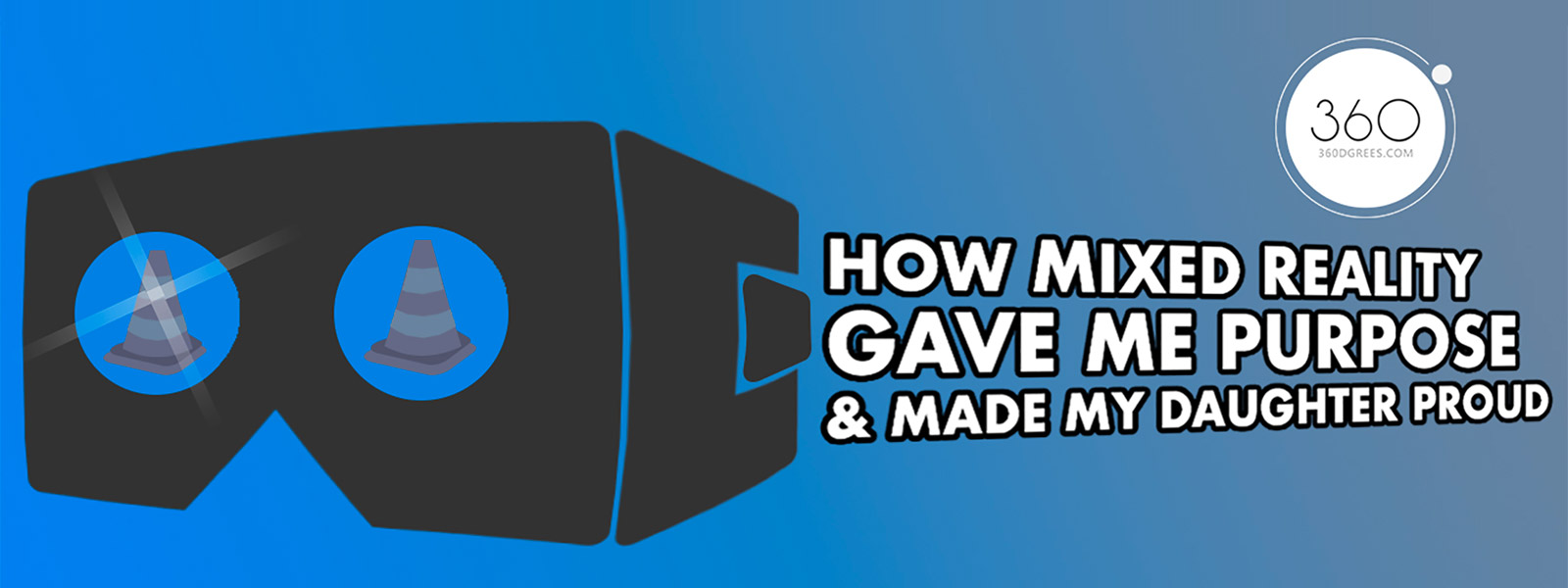
 Now I want you to reimagine that training using our 360dgree.com platform. First, the participant puts on the Mixed Reality headset and is immediately immersed in the environment. They are in the warehouse. They take the point of view of the person walking across the warehouse when they hear an SMS and a phone appears at the bottom of their view. They look down to read the text and in that split second, they are hit by a forklift. Sounds a bit rough right, but not nearly as rough as not getting home to your kids.
Now I want you to reimagine that training using our 360dgree.com platform. First, the participant puts on the Mixed Reality headset and is immediately immersed in the environment. They are in the warehouse. They take the point of view of the person walking across the warehouse when they hear an SMS and a phone appears at the bottom of their view. They look down to read the text and in that split second, they are hit by a forklift. Sounds a bit rough right, but not nearly as rough as not getting home to your kids. You become the forklift driver, the nurse, the student, the teacher. You’re not doing the training, you’re in the training. Actively participating, making decisions and experiencing the outcomes of those decisions.
You become the forklift driver, the nurse, the student, the teacher. You’re not doing the training, you’re in the training. Actively participating, making decisions and experiencing the outcomes of those decisions.
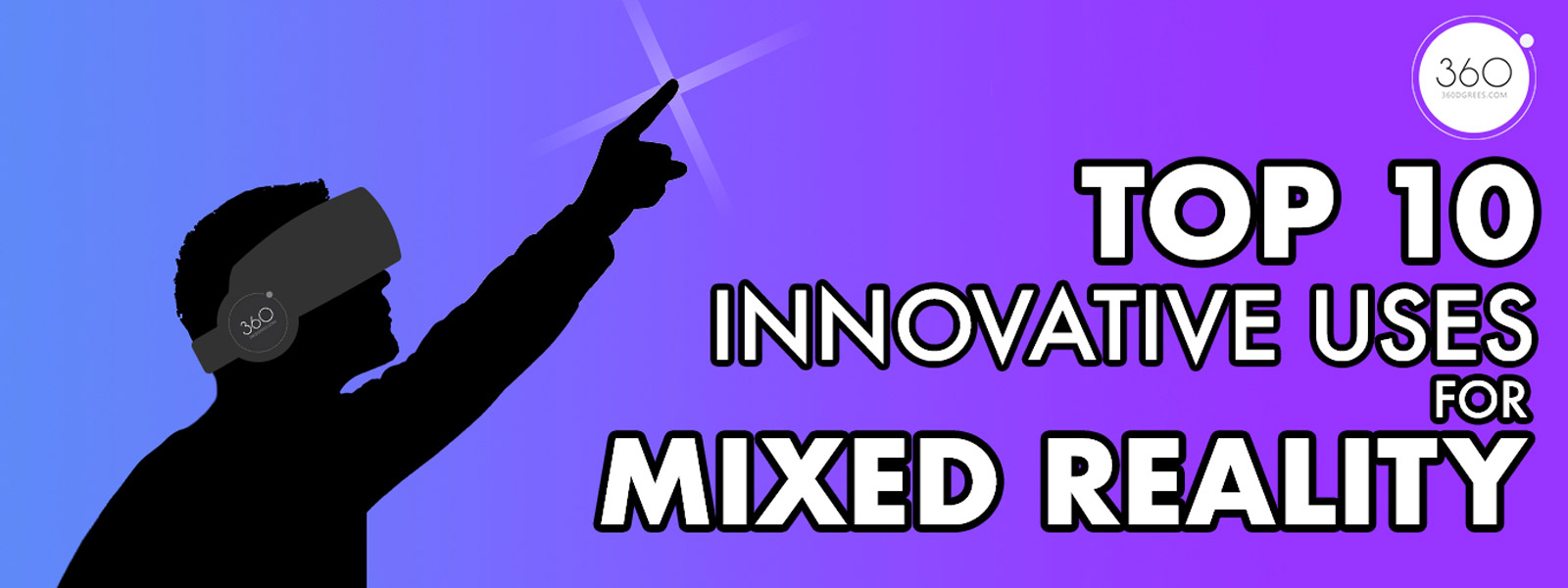










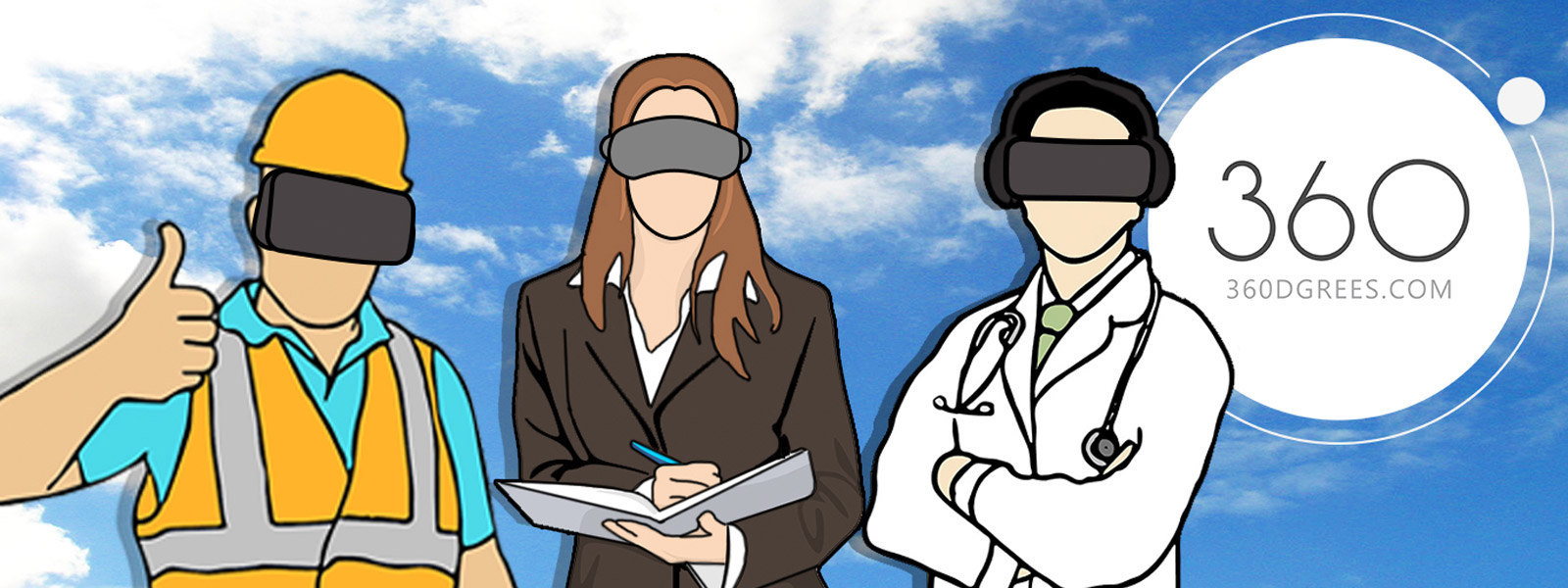
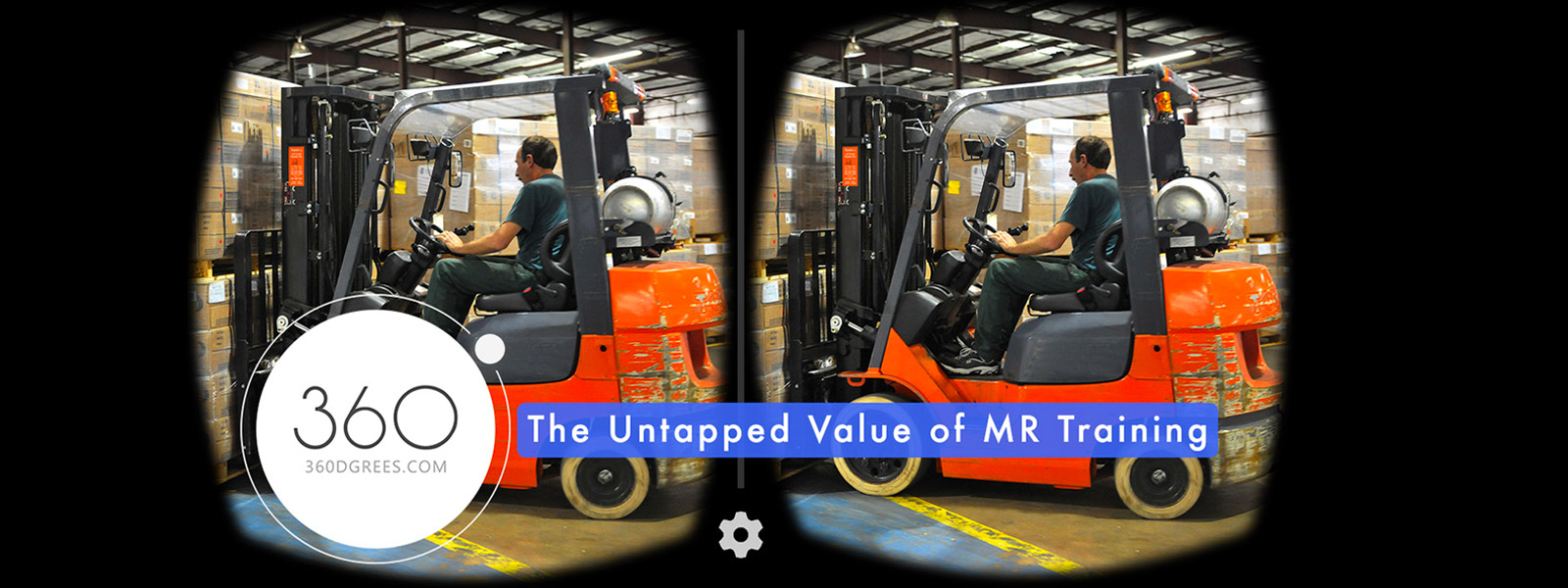

 Instead of traditional training delivering these messages as a lecture/reading from a folder, you can experience it in MR and see the results of your decisions. You can see the accident and, critically, experience the effect and consequence of your action or inaction.
Instead of traditional training delivering these messages as a lecture/reading from a folder, you can experience it in MR and see the results of your decisions. You can see the accident and, critically, experience the effect and consequence of your action or inaction.